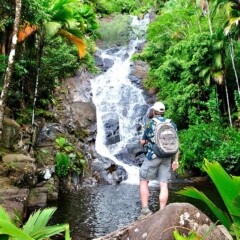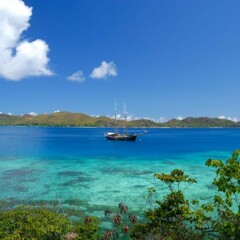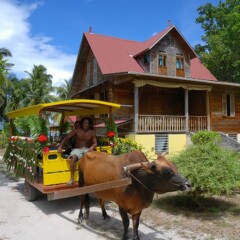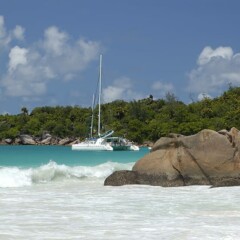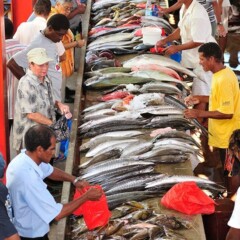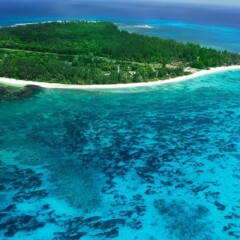Description
Conference, Incentives and Business
It's hard to find a more ideal venue than Seychelles for holding a conference, company incentive trips or doing as several of the world's leading companies are doing... providing the ultimate morale-boosting break for your staff that will be talked about for a long time to come.
Powder soft beaches, waving palms, clear azure water and nearly twelve hours of tropical sun every day - it's difficult to imagine a place so very far from madding crowd that still enjoys wide international access, excellent transportation and communication facilities and a modern infrastructure - everything in fact, to ensure that your particular combination of business and pleasure meets your expectations.
Seychelles welcomes business, group and conference trips and more and more hotels and exclusive island hideaways cater specifically for high-end incentive travel arrangements with a range of dedicated amenities and professional staff on hand to handle the details and ensure your conference or incentive trip is a memorable one indeed.
History
Seychelles is a comparatively young nation which can trace its first settlement back to 1770 when the islands were first settled by the French, leading a small party of whites, Indians and Africans. The islands remained in French hands until the defeat of Napoleon at Waterloo, evolving from humble beginnings to attain a population of 3,500 by the time Seychelles was ceded to Britain under the treaty of Paris in 1814. During this period Seychelles came to know the enlightened policies of administrators such as Pierre Poivre, the brilliant politicking of Governor Queau de Quinssy and, of course, the terrible repercussions of the French Revolution. Under the British, Seychelles achieved a population of some 7,000 by the year 1825. Important estates were established during this time producing coconut, food crops, cotton and sugar cane. During this period Seychelles also saw the establishment of Victoria as her capital, the exile of numerous and colourful troublemakers from the Empire, the devastation caused by the famous Avalanche of 1862 and the economic repercussions of the abolition of slavery. Seychelles achieved independence from Britain in 1976 and became a republic within the commonwealth. Following a period of single party rule by the government of Mr. France Albert René, on December 4, 1991, President René announced a return to the multiparty system of government, 1993 saw the first multiparty presidential and legislative elections held under a new constitution in which President René was victorious. President René also won the 1998 and 2003 elections before transferring the Presidency to James Alix Michel in June 2004.
Accommodation
The rapidly changing face of Seychelles' accommodation scene, in which new and renovated establishments are coming on line regularly, is providing visitors with wider choice and greater options in their selection of holiday accommodation.
A wide range of affordable, new and refurbished hotels, self-caterings and charming Creole guesthouses are joining the ranks of existing 5-star hotels and exclusive island retreats to offer memorable stays among welcoming Creole people and stunning natural surroundings. 16 of Seychelles' 115 islands currently offer accommodation with more charm and are expected to develop hotel facilities in the near future.
Spaces
Seychelles' 115 islands fall under two distinct groups. The tall granite, Inner Islands cluster mainly within the relatively shallow Seychelles' plateau, 4° south of the equator and roughly 1800 km. distant from the east coast of Africa while the low-lying coralline cays, atolls and reef islands of the Outer Islands lie mainly beyond the plateau up to 10° south of the equator. These Outer Islands are divided into five groups: the Amirantes group lying 230km distant from Mahé, the Southern Coral Group, Alphonse Group, Farquhar Group and finally the Aldabra Group, some 1150km from Mahé. There are 43 Inner Islands in all -- 41 granitic and 2 coralline and a total of 72 coralline Outer Islands. Seychelles is a living museum of natural history and a sanctuary for some of the rarest species of flora & fauna on earth. With almost 50% of its limited landmass set aside as national parks and reserves, Seychelles prides itself on its record for far sighted conservation policies that have resulted in an enviable degree of protection for the environment and the varied ecosystems it supports.Speciality
The architectural design of some of the grand old houses with their steep roofs are representative of a style adapted for comfortable living in the tropics that displays influences from Seychelles’ French and British colonial heritage. Modern architecture attempts to assimilate traditional styles with practical features designed to capture the island breezes. Local artists continue to exhibit diverse styles that echo the multi-ethnic backdrop of the islands and bear testament to the various influences which have come to bear. Creole music and dance have their roots in African, Malagasy and European cultures with rhythms traditionally accompanied by simple drums and string instruments which, today, include such recent imports as the violin and guitar.
The traditional moutya is an erotic dance derived from the days of slavery and still features today, together with the sega with its colourful lyrics; the kanmtole, reminiscent of a country reel, and the Kontredanse, an import from the French court.
Geography
The Seychelles' 115 granite and coral islands extend from between 4 and 10 degrees south of the equator and lie between 480km and 1,600km from the east coast of Africa in the western Indian Ocean. This Indian Ocean republic occupies a land area of 455 km² and an Exclusive Economic Zone of 1.4 million km². It represents an archipelago of timeless beauty, tranquillity and harmony that is famous for its world-beating beaches and for its great diversity which rolls from lush forests down to the warm azure ocean.
Of these 115 islands, 41 The Inner Islands constitute the oldest mid-oceanic granite islands on earth while a further 74 form the 5 groups of low-lying coral atolls and reef islets that are the Outer Islands. Seychelles is home to no less than two UNESCO World Heritage Sites: the legendary Vallée de Mai on Praslin where the wondrously shaped Coco-de-mer nut grows high on ancient palms and the fabled Aldabra, the world’s largest raised coral atoll, first seen by early Arab seafarers of the 9th century A.D.
Seychelles, one of the world’s very last frontiers, promises adventure and breathtaking natural beauty in pristine surrounds still untouched by man.


